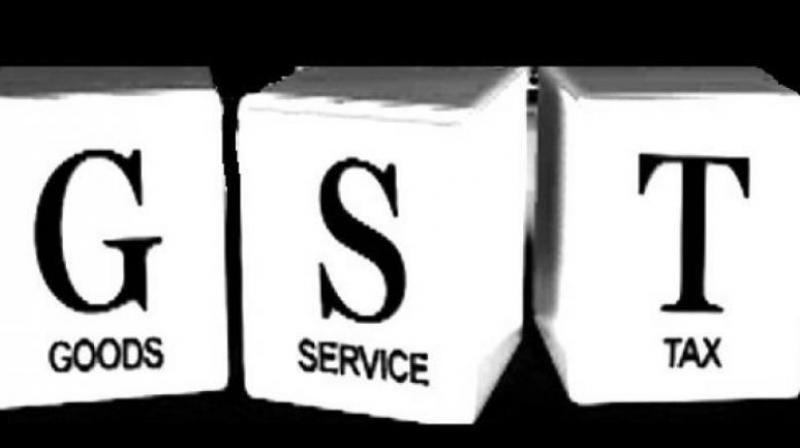GST will get states more than VAT
Today the CBEC is spending hundreds of crores of rupees in modernising computer systems for customs and as well as GST.

GST will help realise over Rs 2 lakh crore additional revenue for both Central and State governments and rationalise prices.Though the prices of commodities may vary owing to transportation costs, GST regime will be beneficial to consumers and also help the authorities to contain tax evasion. I firmly believe that the threshold limit is likely to be reduced from the second year of implementation.
India is one of the last of the large countries to adopt the GST. The GST, from a theoretical point of view, could be the best form of indirect taxes as it impinges only on value addition from the production point to consumption level. Further, GST avoids the complication of sales tax which may not provide for full input credit leading to multiple taxation. The cascading effect in sales tax is difficult to avoid. So the crux of the GST is that value additions get taxed in a manner that it leaves a clear paper trail for authorities to track any evasion.
Secondly, the producer and intermediate traders get all their input taxes set off against the final levy on the consumers, as GST is seamless. The tax on services used during production process or sale process could also be set off in effect that it will be that nobody would gain by evading GST. The VAT was a variation of GST. But it had been levied by states following the role tax policies dividing the country into many markets reducing efficiency of the tax as well as providing opportunity for massive tax evasion. When there is major change in tax policies of government, there will always be several uncertainties pertaining to change. When, as Revenue Secretary of GOI, I introduced computerised assessment of imports for customs duty purpose at Delhi airport in 1994 to prevent delays and corruption, the custom house agents and the customs officers at the assessment level joined hands and made the system to fail. There was surprisingly resistance from the then chairman of CBEC (Central Board of Excise and Customs). The then Finance Minister Manmohan Singh was surrounded by importers and custom house agents near the entrance to north gate block office pointing out how the computerised assessment was a useless system. I refused to backtrack and thanks to the brilliant work of Dr. N. Seshagiri, the then Director of NIC and Dr. Garg, present director of computer emergency response team, the system was back in force.
Today the CBEC is spending hundreds of crores of rupees in modernising computer systems for customs and as well as GST. Some state governments have raised the bogey of a fall in tax revenue. The same fear was expressed during the implementation of VAT, but most states found that their revenue showed tremendous buoyancy.
PAN was similarly introduced by me when I was Revenue Secretary. Again there were fears but the glitches were overcome in short time. I still remember 22 years ago I had issued directions that PAN should be used by central excise, customs and also by sales tax departments of states so that there's one reference number for any tax payer. It is unfortunate that CBEC paid scant regard to this at that time. I am extremely happy to note that PAN will be used for all registrations under GST so that it becomes a universal tax identity number.
I would like to point out here that Europe has VAT which is almost like GST in its features. There are certain guidelines issued by the European Union regarding minimum tax level and tax rates also vary from member to member. Indeed the GST that's proposed to be implemented is a compromise arrived at amid dissenting voices. Finance Minister Arun Jaitley must be credited for working out a consensus to implement the GST even in a rough form. You must remember that even in an aircraft there will be problems but they are ironed out over a period of time even as the problems are discovered. In view of the great advancement in software and hardware technology, most of the problems could be sorted out. I am absolutely confident that the fears of states are unfounded. If GST is implemented, it should yield substantially more revenue than VAT at present. During my term as Revenue Secretary, we considered 16% tax across the board for goods and services to be an ideal rate. But considering various other factors the government is now ordained to arrive at a consensus and decide on different rates. Hopefully after one year of GST, they should be in a position to reduce rates further. Both the Centre and state governments will get over Rs 2 lakh crore additional revenue per annum through GST. The consumers too will benefit under certain conditions subject to state VAT and central excise. For instance, if an item is to be taxed at production point say 20 % and if VAT of 14% is levied in a state, the total burden on consumers will be 34%. Under the GST regime this 34% will get reduced to 18%. The prices of commodities will be uniform and the differential price will be due to transportation cost. By and large, there is unlikely to be overall impact on price level. There are likely to be problems during the GST implementation. On the flip side the disputes will come down.
(The author, M. R. Sivaraman, IAS (Retd), is former Union Revenue Secretary, former Executive Director of IMF and the brain behind the introduction of VAT and PAN.)
